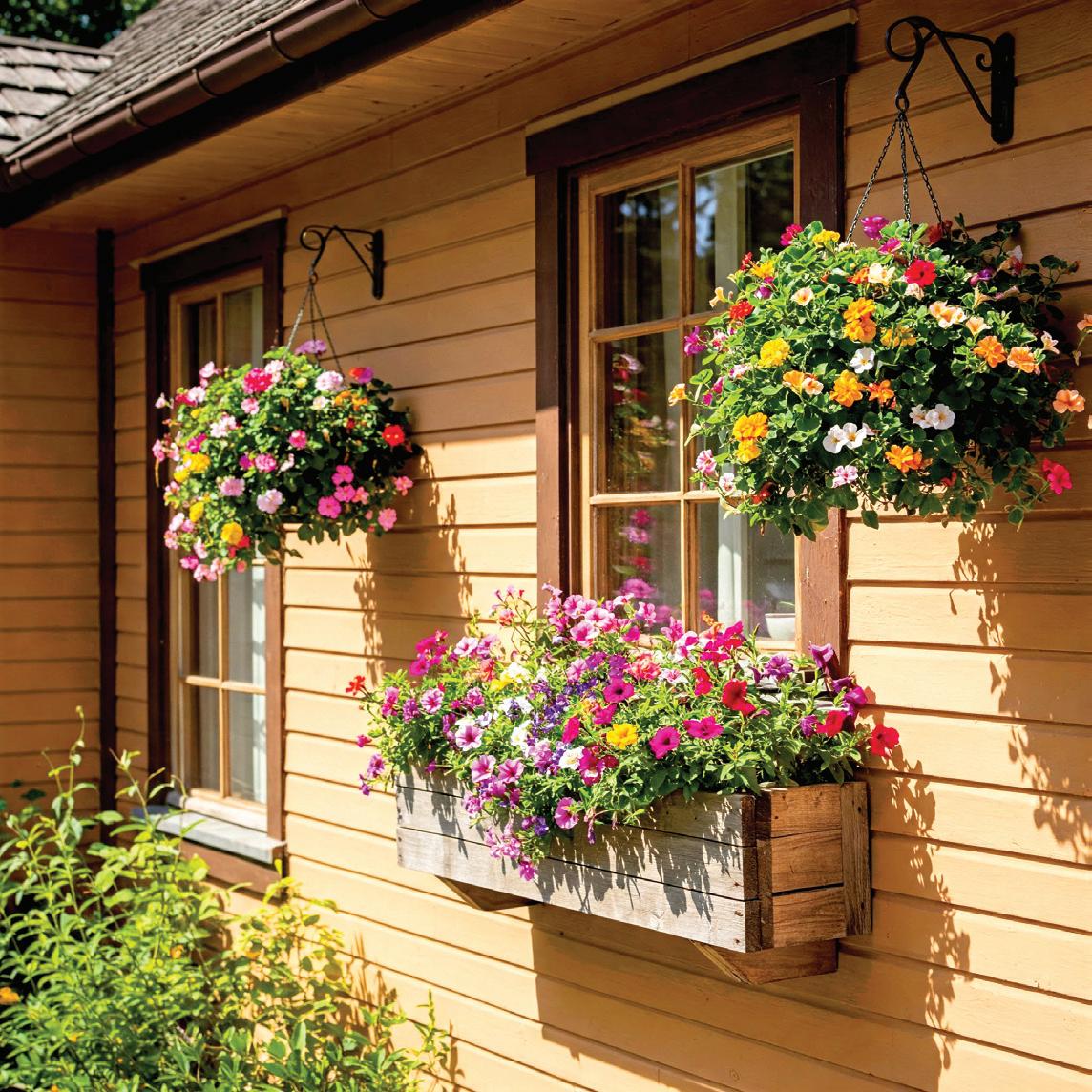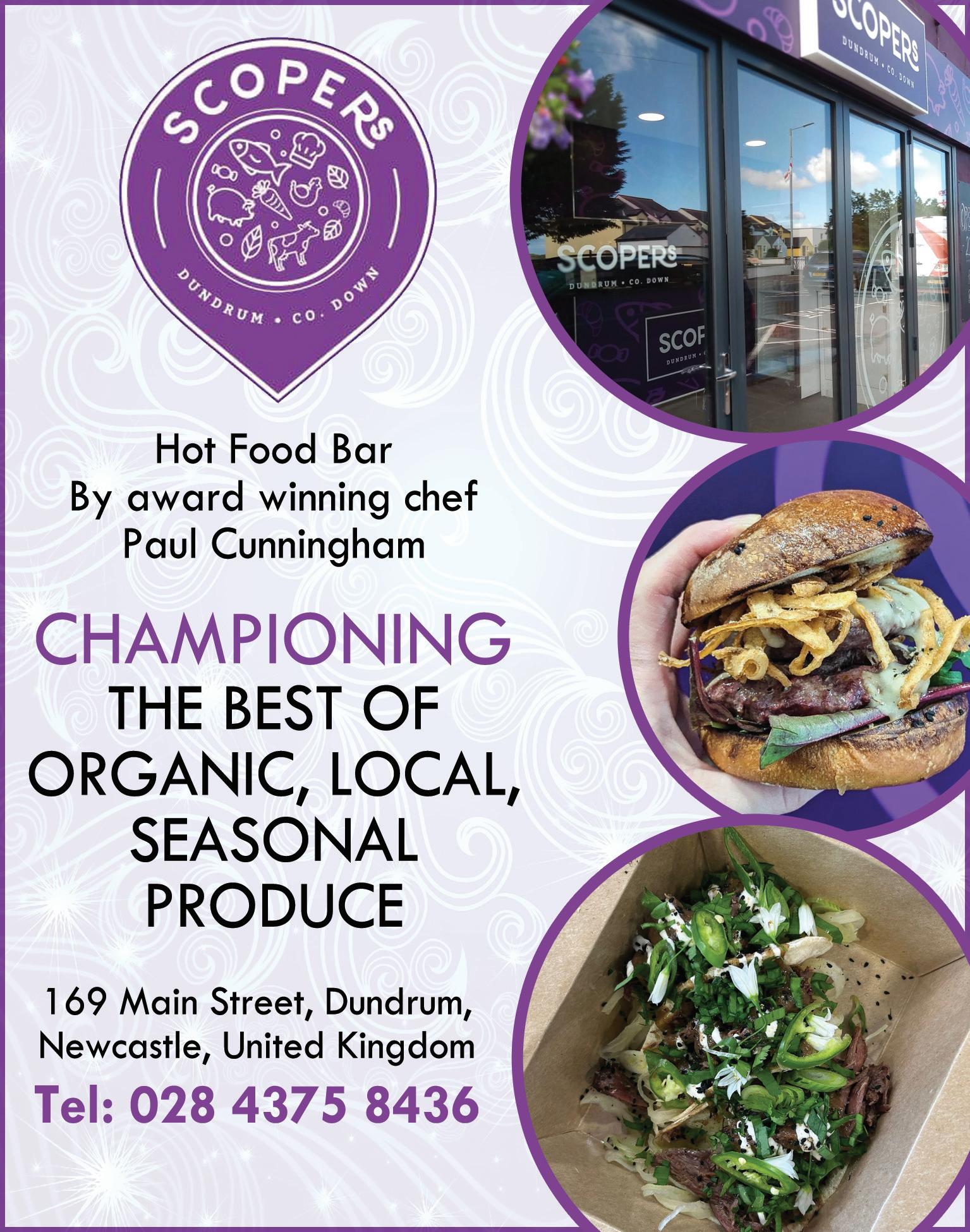










Ashfield Boys’ High School, Belfast and Donard School, Banbridge have been recognised for exceptional pastoral care at an award ceremony hosted by the Department of Education and the Public Health Agency (PHA).
The Derrytrasna Pastoral Care award was created by the Department of Education in partnership with the Public Health Agency (PHA) in 2014. It seeks to recognise through nominations, those school communities that have demonstrated exceptional effort in supporting the pastoral care of pupils and their families.
Education Minister Paul Givan said: “Young people today are facing many challenges and that is why the support provided by our schools can prove vital in helping them deal with the difficulties and hardships of life.
Excellent pastoral care is not about the everyday support offered by
schools. It is about a level of care and help that is provided over and above what is expected, and it is important to acknowledge and celebrate such work.”
Director of Public Health at the PHA, Dr Joanne McClean, said: “The Public Health Agency is committed to helping support children and young people secure
the best start in life.
The provision of quality pastoral care has the potential to improve education and health outcomes for our young people and so can play a role in helping to reduce health inequalities. I commend this year’s winners for their exceptional commitment to pastoral care.”

Health Minister Mike Nesbitt has announced the launch of a regional approach for red flag breast cancer assessments, a major reform aimed at equalising waits for patients across Northern Ireland including at Ulster Hospital.
The new regional system is now live and is designed to address long standing disparities in waiting times and ensure that all patients referred with suspected breast cancer are seen based on clinical need rather than postcode.
The initiative reflects the Minister’s broader drive to improve patient outcomes and restore public confidence in diagnostic services.
The rollout has been supported by the implementation of the encompass electronic patient record system, now live across all Health and Social Care Trusts.
This digital infrastructure enables coordinated appointment booking across the region and improves the use of available capacity.
The South Eastern Health and Social Care Trust
(SEHSCT) is managing the regional waiting list through a centralised administrative team. While most patients will still attend their local hospital, they may be offered an earlier appointment at one of the following five acute hospital sites:
• Altnagelvin Area Hospital (Western HSC Trust)
• Antrim Area Hospital (Northern HSC Trust)
• Belfast City Hospital (Belfast HSC Trust)
• Craigavon Area Hospital (Southern HSC Trust)
• Ulster Hospital Dundonald (South Eastern HSC Trust)
Patients will continue to be referred and triaged by their home Trust, with those meeting red flag criteria passed to a regional booking team managed by the South Eastern Trust.


Oscar, BAFTA and IFTA Star, James Martin is calling on individuals, organisations, and communities across the region to embrace the theme of ‘Connect’ and take part in Good Relations Week 2025 - helping to shape a more peaceful, inclusive, and sustainable future for everyone.
Coordinated by the Community Relations Council, Good Relations Week 2025 will run from Monday 13th to Sunday 19th October, with a dynamic programme of more than 200 cross-community and multicultural events taking place across all 11 local council areas.
This year’s theme, ‘Connect’, highlights how lasting progress and a better future for everyone depends on the strong and meaningful links between People, Planet and Prosperity – all connected by the shared goal of peace.
As the official ambassador for Good Relations Week 2025, James Martin, the first leading actor with Down’s syndrome to star in an Oscar, BAFTA and IFTA winning film, said: “I’m proud to support Good Relations Week 2025 and to champion this year’s important theme of ‘Connect’.

we can shape a future that’s kinder, more inclusive and full of opportunity for everyone, no matter who they are or where they come from.
“We all need connection, with each other, with our environment and with the communities we’re part of. It’s through those connections that we build understanding, friendship and a sense of belonging.
“When we work together,
“I’d love to see as many people and organisations as possible getting involved this year. Let’s connect, take part and make a real difference together.”
The week-long celebration will shine a spotlight on the work of individuals and organisations using connection and collaboration to break down barriers, strengthen
community relations and address key societal challenges, including sectarianism, racism, inequality, mental health, poverty and education. The programme of events will include workshops, exhibitions, storytelling, theatre, musical performances, discussions and cultural showcases, providing a platform for shared learning, civic pride, and collective impact.
Good Relations Week is supported by The Executive Office and plays a key role in delivering the objectives of the Together:
Building a United Community (T:BUC) Strategy.
The Community Relations Council is now inviting community groups, voluntary organisations, local councils, statutory bodies, schools, and businesses to register events that reflect this year’s theme and help build a more connected, inclusive, and cohesive society.
To find out more about Good Relations Week 2025 and to register your event, visit: www. goodrelationsweek.com



Staff and pupils from St John the Baptist Primary School are calling on budding gardeners to follow their lead and enter this year’s Belfast in Bloom competition.
The school was among the winners of last year’s contest, picking up the prize for Best School Garden (West).
Their outdoor space brings pupils, their parents and grandparents together to foster a love of growing, with wildflowers, seasonal


planting and vegetables all on display. The school’s gardening club have also made the garden a home for local wildlife, with bug houses and bee-friendly habitats.
Run by Belfast City Council, Belfast in Bloom celebrates the greenfingered efforts and work of local residents, community groups and businesses across the city. There are individual awards, community awards and prizes for commercial premises, businesses and schools.
Visiting the St John the Baptist PS garden, Councillor Matt Garrett, Deputy Chair of Belfast City Council’s People and Communities Committee, said: “What a brilliant space the children and their teachers have built, creating a place that looks
amazing and encourages young people to spend time outdoors, in nature, together with their friends and families.
“Their Belfast in Bloom award was well deserved and really appreciated by the school as an acknowledgement of all the hard work and effort that has gone into the garden.
“If you know a school that is doing something similar, a neighbour with amazing window boxes or hanging baskets, a business who has created a brilliant atmosphere with creative planting or a community group going the extra mile to bring people together through gardening – we want to hear about it!
“Nominating someone for an Belfast in Bloom award is a great way to recognise their efforts and, with this year’s sunny
spell, we hope to have lots of beautiful entries to choose from.”
Residents can enter for the ‘Best Hanging Basket’, ‘Best Window Box’ and ‘Best Garden’.
Community organisations can enter for ‘Best Community Street’, ‘Best Community Group’ and ‘Best Community Garden’. Businesses can enter the commercial category for ‘Best Hotel’, ‘Best Public House’, ‘Best Restaurant’, ‘Best Commercial Street’ and ‘Best Commercial Premises’, and local schools can enter for ‘Best Kept School Garden’ in the north, south, east and west of the city.
There are also awards for ‘Best Individual Allotment’ and ‘Best Allotment Site’ in Belfast.
The competition is free

to enter, and nominations can be made online at belfastcity.gov.uk/ belfastinbloom
The closing date for the school awards’ category
is Friday 20 June 2025 and the closing date for all other categories is Friday 1 August 2025, with judging taking place in August. Other winners in 2024
The contribution of Belfast’s LGBTQ+ community has been marked by Belfast City Council with the unveiling of a new stained glass window at City Hall.

Spar
Old Dundonald Road, Dundonald, BT16 1DE
Spar
73 Comber Road, Dundonald, BT16 2AE
Sinclairs Newsagents 58 Upper Newtownards Road, BT4 2EN
The Boulevard Day Today
297 Holywood Road, BT4 2EX
The colourful window shows pivotal moments in the community’s development and was designed in partnership with representatives from the sector.
Spar
323 Beersbridge Road, BT5 5DS
Spar
310 Albertbridge Road, BT5 4EX Vivo 32 Castlereagh Road, BT5 5FP Orbies 120 Orby Drive, BT5 6BB
There was cross-party support for the commission of the new window which is on the ground floor of City Hall. It is the latest window to be transformed as part of ongoing work over the last 15 years to develop the building as a shared space for everyone.
quotes from, and references to, contemporary LGBTQ+ figures, visualisations of key milestones and images and banners depicting LGBTQ+ led campaigns, including Love Equality and Lesbians and Gays Support the Miners.
Bright colours represent the Progress Pride flag, while the window is framed with green carnations, a flower associated with Oscar Wilde.
Cara McCann from HERe NI said the window’s installation was a vital
The design includes

recognition of the LGBTQ+ community.
Bells Newsagent 5 Kings Square, BT5 7EA
Spar Enterprise Business Centre, Ballybeen, BT16 2QG Nelsons Newsagents 52 Belmont Rd, Belfast BT4 2AN Pick up your FREE copy
Elsies
116 Castlereagh Street, BT5 4NL

“Community and visibility matter. When people see themselves reflected in public spaces – in windows, books, classrooms and councils – they feel valued. They feel seen,” she said.
“The window reflects our community strength – how we come together, in our streets and our shared spaces,
to lift one another up, to speak out against injustice and to create visibility, where once there was silence.
“For LGBTQIA+ people, that recognition is not just nice to have – it is life-affirming. For young LGBTQIA+ people walking through the City Hall’s grounds, wondering if they belong – this window says: you do

Commonwealth Irish badminton player, Ciarán Chambers, along with other elite athletes delivered Lidl Northern Ireland’s renowned Sport for Good programme at seven County Antrim schools throughout the school term.
The schools selected to take part in this year’s programme - which features a series of dedicated mental health workshops - included Ashfield Boys High School, Belfast Boys Model School, Blessed Trinity College (Little Flower Girls School), De la Salle College, Dominican College, Parkhall Integrated College and Parkview Special School.
Developed in partnership with the Youth Sport Trust, Lidl has supported almost 200 sports clubs and schools across Northern Ireland to date and provided around £400,000 in funding to encourage youth participation in sport.
The programme is designed to enable young people to better manage stress, build resilience and self-esteem and view sport and movement as tools for looking after their mental wellbeing, with each participating school also receiving £1,000 worth of new sports equipment.
Commenting on the Sport for Good workshops and their impact on young people, mentor Ciarán Chambers said:
“Being involved with the Sport for Good programme alongside Lidl Northern Ireland and the Youth Sport Trust has been incredibly rewarding. This initiative

has positively impacted the lives of more than 1,100 young people across Northern Ireland this year.
Visiting schools and seeing firsthand how students are embracing the programme has been truly inspiring and it is great to hear from teachers about the benefits they and their students gain from the programme.”
Commenting on the success of the programme to date, Gordon Cruikshanks, Regional Managing Director for Lidl Northern Ireland said:
“Since 2019, Sport for Good has become a cornerstone of our
community engagement strategy, making a meaningful difference in the lives of young people across the region.
We’ve partnered with the Youth Sport Trust and assembled an exceptional team of inspiring athlete mentors who provide practical guidance on building resilience through sport.
The £1,000 equipment grant ensures this positive impact continues beyond our workshops, supporting teachers and students to use sport and exercise to promote positive mental and physical wellbeing.”
“We’re delighted to continue our valued partnership with Lidl Northern Ireland. The Sport for Good programme plays a vital role in supporting young people across the region, helping them navigate both physical and mental health challenges through the power of sport and play.
Our athlete mentors serve not only as guides, but as powerful sources of inspiration for students, demonstrating how physical activity can enhance confidence, resilience, and overall wellbeing.”



Economy Minister Dr Caoimhe Archibald has recently launched a Green Skills Action Plan. Developed in conjunction with an industry-led expert working group, the Action Plan provides a framework to guide government, employers and educationalists on what is required to deliver the skills and green jobs for the future.
Speaking after launching the Action Plan in Belfast, the Minister said: “My Green Skills Action Plan outlines how we can develop the skills needed for the transition to net zero, and realise the job opportunities being created across multiple industries.


“Through this Action Plan we will equip individuals with the skills they need to succeed in a rapidly evolving job market. My Department will continue to work with the Green Skills Delivery Group to keep the plan updated as we move towards a more sustainable economy.”
Gordon Parkes, Executive Director People and Culture for NIE Networks and Chair of the Green Skills Delivery Group, said: “Research suggests that there are currently circa 105,000 jobs in the green economy in Northern Ireland, with an additional 58,000 jobs over the next ten years. Access to the right skills and talent will be one of the biggest challenges over that period and beyond. There is a tremendous opportunity to deliver for
our people, businesses, the economy and our society. The Green Skills Action Plan is the first of its kind and provides the framework for employers, government and education providers to work together to maximise the opportunities that exist.”
Suzanne Wylie, Chief Executive of the NI Chamber, added: “Aligning Northern Ireland’s skills pipeline with net zero targets is crucial if the region is to capitalise on the economic potential of green growth. As demand for ‘green’ jobs grows, the availability of associated skills needs to keep up the pace. Addressing this, through co-ordinated investment in green skills training and accessible pathways into the sector, is crucial. “NI Chamber welcomes the publication of this Green Skills Action Plan. The plan’s focus on employer engagement

is positive and should help facilitate stronger collaboration between government, business and
educators, as they work together to ensure that Northern Ireland’s skills system is responsive,
inclusive and better aligned with industry needs.”
The report is available
on the Department’s website at: www.economyni.gov.uk/articles/ green-skills-action-plan
A free exhibition celebrating the work of Lucian Freud has opened at Titanic Belfast, in collaboration with the V&A, giving visitors the chance to view over 60 of the renowned artist’s famous etchings as well as a new immersive experience created by the world-famous attraction.
Lucian Freud’s Etchings: A Creative Collaboration exhibition rununtil Tuesday 30th September in the Andrews Gallery on Level 2 of Titanic Belfast and charts Freud’s development as an etcher, from his early, tentative explorations to his later mastery of flesh and form through line.


Artwork featured in the exhibition will include Bella in Her Pluto T-Shirt (1995); Woman Sleeping (1995); Self-portrait: Reflection (1996); Pluto Aged 12 (2000) and Donegal Man (2007) – which has a special connection to Titanic Belfast as the sitter was Pat Doherty, the visitor
attraction’s Chairman.
For the first time, visitors will also be able to enjoy a new, immersive experience that brings the etching process to life, allowing them to engage with the meticulous and unpredictable nature of Freud’s printmaking.
Interactive listening pods offer further insight into the artist’s world through interviews with key figures who knew him well: David Dawson, Freud’s long-standing assistant and frequent model; Andrew Parker-Bowles, who sat for The Brigadier;



Gill Saunders, curator of the collection; and Sally Clarke, owner of Clarke’s restaurant, where Freud dined daily. Together, these voices offer a deeper understanding of the man behind the work - his habits, his relationships, and the uncompromising vision that shaped his extraordinary artistic legacy.
The exhibition will also include a recreation of his Kensington studio, offering an intimate glimpse into the space he worked that became a living artwork itself with his iconic bundles of rags, collected to clean his brushes – a testament to his obsessive
devotion to his craft.
Judith Owens MBE, Chief Executive of Titanic Belfast said: “We are delighted to open Lucian Freud’s Etchings: A Creative Collaboration exhibition.
This stunning exhibition, and immersive experience, gives people the unique opportunity to view unseen work from one of the foremost British artists of the 20th-century, and to become fully immersed in finding out more about this fascinating man and the stories behind his creative process and collaborations.
At Titanic Belfast, we are committed to bringing world-class events to

Belfast, to not only expand the offering available to our visitors, but to also continue to enhance Belfast as a place to live, work and visit, so we are immensely proud to be the first location for this beautiful exhibition as part of a global tour, and the only port of call on the island of Ireland that the artwork is being displayed.”
Gill Saunders, Curator for the V&A’s Lucian Freud’s etching exhibition said “Freud’s etchings invite us to linger over every line. Etching magnifies each decision an artist makes - the bite of the acid, the depth of each scored mark and the patience between successive plates.
Freud mastered this in his collaborations on show in this exhibition.
Displaying these etchings at Titanic Belfast, a site synonymous with precision engineering and bold vision, feels fitting: both celebrate painstaking craft in the service of something unforgettable.”
For further information on Lucian Freud’s Etchings: A Creative Collaboration exhibition go to www. titanicbelfast.com
Asda’s Charity, Asda Foundation has awarded a £1,000 grant to a much-loved Dundonald charity that works with grassroots groups across the community.

Tullycarnet Action Group Initiative Trust (TAGIT) works to support children, teenagers and the elderly through the provision of free lunches, community events and tackling antisocial behaviour, regularly teaming up with other local organisations to reach people in need.
The grant is part of over £60,000 of funding that will be awarded to grassroots groups and charities across the UK from the Asda Foundation in celebration of Asda’s 60th Birthday.
Volunteer-led TAGIT will work along with one of its partner groups - the Tullycarnet Neighbourhood
Collective Older People’s Programme – to use the funding, providing a social supermarket and healthy eating initiatives for elderly members of the community.
Asda Dundonald Community Champion
Sharon Wilson, said “TAGIT is an amazing community group, supporting everyone – from pensioners right down to young children and those with additional needs. Their work spans everything from seasonal events at Easter, Halloween, and Christmas, to football camps, over 50s groups, and men’s mental health groups.
“They’re also making
a real difference through regeneration of social housing and a communityled social supermarket. At the heart of it all is Caroline Birch - the driving force behind TAGIT. Caroline is everyone’s go-to person in the local community, always bringing positivity and a fantastic can-do attitude.
“I’m so pleased to see them successfully win this grant and to see first-hand the difference it will make to the local community.”
Caroline Birch, Operations Manager, Charter for Northern Ireland and TAGIT said:
“We are incredibly
grateful to the Asda Foundation for this funding. It’s mainly going towards the social supermarket and healthy eating initiatives, including cooking demonstrations with our older community groups.
“We work closely with the Tullycarnet Neighbourhood Collective Older People’s Programme and the members are just ecstatic to receive this extra support.
“A heartfelt thank you to Sharon from Asda for nominating us, we’re genuinely touched. And a huge thank you to everyone at the Asda Foundation for making this possible.”


Direct Belfast – Glasgow Express now departing from the new Belfast Grand Central Station.
An award-winning service offering hasslefree travel, HANNON Coach & Sail is ideal for a city break in Glasgow and the perfect antidote to flying and airport stress! Already hugely popular with those in the know, the Belfast –Glasgow Express Coach Service is rated 5-Star on TripAdvisor.
A shopper’s paradise, Glasgow is recognised as having the best retail therapy in the UK outside of London. Consistently voted ‘top of the shops’, the city is Scotland’s premier shopping destination. Not just shopping, Glasgow is also famous for its fantastic nightlife, and great choice of restaurants and bars.
Glasgow is the perfect choice for your next city break away.
With a simple flat fare of £47 which includes the cost of the ferry and your bag, the Belfast – Glasgow Express offers a really attractive,
JV Allister focuses on our only native reptile, The Common Lizard Legend has it that St. Patrick banished all the snakes from Ireland, but if he had had all the reptiles in mind, he overlooked one, the Common Lizard. Maybe it was hiding under a stone at the time!
In any case, it’s our only native reptile, and a very interesting animal.

convenient and low-cost alternative to flying.
The service is operated by HANNON Coach and leaves twice a day from Belfast, Grand Central Station (Stand 18) and drops visitors right in the heart of Glasgow’s ‘Style Mile’.
The simple flat fare allows passengers to pick and mix dates and times of travel to suit and with no luggage charges it makes a
perfect travel option for a shopping trip. There are also a great range of hotels just minutes from Glasgow Buchanan Bus Station.
Company director Aodh Hannon says people seem to really love the convenience of the service as we take you right into the heart of the city centre.
“People love the fact that it’s so hassle-free compared to flying, no
airport transfers and with no extra charge for luggage it is a massive help with keeping the cost of a break down.” said Mr Hannon. The service can be booked online at www. hannoncoach.com up to 1 hour before departure or by phone using the very friendly telephone booking service. Call 028 9265 0700 (Mon – Fri) or visit www.hannoncoach.com
Like all reptiles, common lizards are cold blooded, relying on external heat to regulate their body temperature, and are often found sunbathing on rocks or sand in the mornings in their known habitat ‘hot spots’, mostly in mountainous areas such as the Mournes and Sperrins, even the Belfast Hills, as well as some bogs and coastal dunes.

They might be slow when cold but can run fast when fully heated, which is their main means of escape if birds or mammals try to catch and eat them. But they have another much more cunning plan: they can shed their tails (still wriggling) to confuse predators, and regrow them, even if they’re usually shorter than the originals. A remarkable adaptation for survival of an otherwise vulnerable creature.
They have also adapted to living in colder northern regions as they spread through Europe and beyond. Most reptiles, and all birds of course,
lay eggs, but our female common lizards give birth to live young. In more southern, warmer climes, common lizards are known to lay eggs. While their overall numbers here are not exactly known, it’s thought likely that they are in decline, mainly because of habitat loss; and the extensive wildfires this year will have destroyed precious habitat for many
years to come, as well as killing many lizards. Despite their adaptations, they live precarious lives, particularly as weather patterns change and people do stupid things like setting fire to wild places.
Incidentally, St. Patrick didn’t banish the snakes from Ireland, for the simple reason that there were none in his time, since before the last Ice Age. Rather, it seems
that snakes served as an allegory for paganism, which Patrick ‘banished’ as he brought Christianity to our shores.
Myths and legends have their place in our folk memories, but we also need to know the stories about our highly adaptable native wildlife, and in the case of common lizards, protect our only native reptile.
JVA

There has been a special buzz of excitement over the past few months in Leadhill Primary School, with the opening of our new specialist provision unit, offering 8 places to statemented Nursery to P2 children with a primary need of Severe Learning Difficulties.
The new unit, called ‘The Foundation Class’, will provide a firm foundation and individualised approach to support learning and development for all its new pupils. The class have already become an important part of life in Leadhill as the children forge friendships with all the other children in the Leadhill Family.
In Leadhill, this inclusive, nurturing, family approach is central to the ethos of the school. The school motto – ‘Learning Together Moving Forwards’ reflects the collaborative nature of the school and the desire to always progress and advance. The new Foundation Class is an exciting part of this journey for
Leadhill.

Leadhill aims to support families with provision of affordable and flexible childcare and a pre-school playgroup for children from 2 years and 10 months. If you would like to know more about Leadhill, the Pre-school Playgroup and WrapAround Care, please visit our website on www. leadhillps.com.
Leadhill would love to welcome you for a visit. Contact the school office on 028 90401101 or email Mrs Millis on amillis370@c2kni.net to arrange for a suitable date and time.


Belfast and Lisburn Women’s Aid are now able to provide essential eye and audiology services for women affected by domestic violence in Northern Ireland thanks to a new partnership with their local Specsavers stores.
The stores, including Specsavers Connswater, will offer vital support to vulnerable women, ensuring that they have access to eye and hearing tests, treatments, prescription lenses and frames whenever they need them. As part of this ongoing partnership, Belfast and Lisburn’s Women’s Aid will also engage with Specsavers staff for awareness sessions to help them to better understand the experiences of women affected by domestic abuse. Belfast and Lisburn Women’s Aid plays a crucial role in supporting survivors of domestic violence, with 1,604 women using its services in the 2023/24 year. Of these, 920 identified as having a disability or complex need, including 9 with visual disabilities and 11 with hearing disabilities.
Sarah Mason, Chief Executive Officer of Women’s Aid in Northern Ireland said, “The PSNI receive a
domestic violencerelated call every 16 minutes. Domestic abuse affects women in so many ways, including their ability to access healthcare. Often these women have experienced injuries that can affect both their eyes and ears. Having this partnership with Specsavers Connswater is a vital step in helping women in our local Belfast shelter who are seeking help to rebuild their lives. Eye and ear health services can make a real difference in ensuring that these women feel supported and heard.”
Acknowledging the importance of accessible healthcare, Specsavers Lisburn have led the way in initiating this partnership with Women’s Aid. Three additional Specsavers stores have stepped in alongside the Lisburn and Connswater stores to provide these services including Abbey Centre, Park Centre and Victoria Square. Women at the
Belfast and Lisburn refuges will be able to book an eye or audiology test through the refuge directly free of charge, with the stores ensuring the on-going care for each individual who uses their services.
Paula Cunningham, Director at Specsavers Connswater emphasises the significance of this partnership, “As two female directors, we are in awe of the work that Women’s Aid do and are incredibly eager to offer support women in our local area. We want to be able to offer some normality to women experiencing domestic abuse and offer them a safe space to access testing and care when they need it. We hope that this partnership not only provides practical help but also raises awareness of the challenges that women experiencing domestic abuse in Northern Ireland face.”
This collaboration reflects a shared

commitment to providing women with the care and resources that they need in a safe and supportive environment. The service will be available to women whenever they require it, reinforcing the importance of
accessible healthcare in the fight against domestic violence. To find out more about the work that Women’s Aid do to tackle domestic violence in Northern Ireland visit https://www. womensaidni.org/
Empowering Mobility in Belfast
Shopmobility Belfast is a registered charity dedicated to making Belfast City Centre and its surrounding areas more accessible to individuals with mobility challenges. By providing free daily rentals of mobility scooters and wheelchairs, the organisation ensures that people with disabilities or mobility difficulties can enjoy the city without barriers to shop, attend appointments, meet friends and connect with their community.
Julie Guilar, Director of Shopmobility Belfast, emphasises the importance of their service:
“By utilising mobility scooters and wheelchairs, our unique and specialised service is vital to help people with disabilities or mobility difficulties access Belfast City Centre and beyond with greater freedom, independence, and dignity.”
Services Offered
• Mobility Equipment
Hire: A wide range of mobility scooters and wheelchairs are available for both short-term and long-term use;
• Training and Support: Users receive training and support from experienced staff, helping them operate the equipment with confidence;
• Outreach Programs: The charity works with community groups to raise awareness about mobility issues and promote inclusive practices.
• Repair and Servicing: If you have your own mobility equipment
Shopmobility Belfast can now service, maintain and make repairs, test and fit new batteries etc. As an established charity we guarantee to offer the best prices available.
Benefits of Using Shopmobility Belfast
• Independence: Explore Belfast City Centre and surrounding areas at your own pace;
• Accessibility: Easily access shops, restaurants, attractions, and public transportation, overcoming physical barriers;
• Accessibility Advocacy: Shopmobility Belfast collaborates with businesses and organisations to enhance accessibility throughout the city, ensuring smoother experiences for individuals with mobility needs;
• Cost-Effective: Take advantage of the free daily rental of high-quality mobility equipment and low-cost repairs and maintenance costs for your own equipment;
• Support: Receive expert guidance and assistance from the Shopmobility team.
How to Access the Service Membership with Shopmobility Belfast is free and open to anyone with mobility difficulties, regardless of age or disability status. To become a member, you can register in person at one of their locations, online or by contacting them directly.
Locations Shopmobility Belfast operates from multiple convenient locations across Belfast City Centre and the surrounding areas.
Contact Information For more details, to register as a member, or to check equipment availability, visit their website or contact them directly:
• Website: shopmobilitybelfast.co.uk
• Phone: 028 9080 8090 (Great Northern Mall)
• Email: info@ shopmobilitybelfast.co.uk
Shopmobility Belfast is a vital resource for those with mobility challenges, enabling full participation in community life and ensuring that everyone can enjoy all that Belfast has to offer.


PLANNING THE
SPACE
Think about the direction – in the UK a South facing situation is normally preferred to make the most of all that natural light during summer but also think about roof cover, especially over any appliances and your food prep area. You might also want to consider having ventilation for your cooking system installed just as you would indoors.
FUNCTION AND FORM
Make provision for countertop space for cooking as well as serving & entertaining.

For example an island with bar area and stools could be considered or perhaps a lounging area as well
GET COOKING
Traditional Barrell style Barbecue grill, ceramic cooker, rotisserie, smoker or even a (gas or woodfired) pizza oven?
Options can include
sear burners, side burners and warmers.
You can even integrated some smart technology options into your outdoor kitchen.
KEEP IT COOL
It may not be too long a trek to the kitchen but an outdoor fridge can be beneficial if you are preparing salads and or cool desserts out of doors. Also handy for keeping drinks cool and within easy reach.
WHICH MATERIAL
Stainless steel is a hot favourite for industrial look cabinetry however
there are lots of powdercoated metals that also work. Stone and tile are also options. Countertop materials are another thing to think about. They need to be both functional and durable. .
HEAT IT UP
If you want to use your new outdoor kitchen well into Autumn consider installing heat sources such as patio heaters and a fire-pit.
POWER UP
Be sure you have enough power on the deck or patio, which could mean enlarging
a gas line or adding electrical capacity to run appliances and lighting.
LIGHT IT UP
You will need functional lighting for cooking safely at night –so consider this at work surface level as well as ambient lighting.
ENTERTAINING
OUT OF DOORS
You can install built-in speakers and a even a flat screen TV, or choose only music and let the view from your outdoor kitchen and dining area entertain you and your guests.
Looking to transform your garden or outdoor space? Head straight to Urban Outlet, located at 163 Moneyreagh Road – your one-stop destination for all things landscaping and hardware!
Whether you’re revamping your patio, fencing in your garden, or just giving your outdoor area a fresh new look, Urban Outlet
From a massive selection of fencing, paints, patio flags, and timber, to eyecatching decorative stones and aggregates – available in both bulk bags and full loads –we’ve got everything you need under one roof.
Need tools, accessories, or building supplies? We’ve got you covered. We even carry concrete, screed, and both building and plastering mortar. Our shelves are stocked and updated daily, so there’s

always something new to discover.
And don’t worry about delivery – with our fleet of tippers and Hiab crane lorries, we’ll get your order right to your doorstep. Or if it fits in your car, we’ll gladly help you
load up and hit the road.
From railway sleepers and kerbs to decorative bark and agricultural supplies, Urban Outlet is your go-to place to create the perfect outdoor living space.
Our friendly, knowledgeable team is always on hand to offer expert advice and answer any questions you have.
Stop by today and see why Urban Outlet is the ultimate destination for outdoor inspiration!


As a first-time-buyer, the prospect of getting on the property ladder can seem daunting and complicated. However, by following our advice, the steps can become significantly easier.
The first thing that you will have to do is begin saving for a deposit. Generally, you will have to save between 5% and 20% of the value of the property that you like – if the home is £150,000 then you will need between £7,500 (5%) and £30,00 (20%) depending on the property. It is important to note that saving more for your deposit will give access to a wider range of cheaper mortgages –so get saving!


It is important that you factor in the other costs associated with buying a property. These can add up to the thousands of pounds and can derail any potential budget when it comes to getting your first home. Additional costs include survey costs, solicitor’s fees, buildings insurance and valuation fees to name but a few. It is worth asking your bank about these prices before making an offer and you can therefore factor them into your budget. Firsttime-buyers do have an advantage here as they will pay no Stamp Duty on the first
£300,000 for properties valued up to £500,000. When applying for your mortgage, the most important factor for your lender is to know that you will be able to meet your repayments. You will need to provide documentation of all of your outgoing costs, including, debts, household bills, or other costs such as car repayments, childcare or travel costs. The amount that a lender will give you for a mortgage is directly related to both your income and outgoing expenses – so it is important to consider this when looking into homes that you can

afford. There are a number of governmental schemes available to help first-timebuyers get on the
property market such as affordable housing schemes, help to buy schemes and shared ownership schemes. These are designed to
assist those who are struggling to save their full deposit and might be exactly what is required to get you on the property ladder.
The ceiling — sometimes referred to as a room’s fifth wall — often gets short shrift in decorating schemes. Walls and furnishings take centre stage while the acreage overhead receives a coat of neutral white paint, with perhaps a snazzy ceiling fixture.
That wasn’t the case historically. Plaster ornamentation and murals were used centuries ago, and the Victorians really went to town on the ceiling, with elaborate mouldings and stamped tin sheeting. Ceiling medallions graced more formal spaces like dining rooms and parlours, while timber beams and tongue-and-groove boards were popular in kitchens, bedrooms and common spaces. Through the early 20th century, curvy coving, panelled grids and ornate moldings were popular.
But with the advent of modernism after the 1930s, ceilings
became the serene planes most of us are familiar with.
Now we’re looking up again. Designers are really getting creative with architectural elements, as well as paint, wallpaper and lighting.
“Statement ceilings are a great way to bring detail and visual interest to a room,” says Gideon Mendelson, founder and creative director of his New York-based eponymous design group. ``We see them as an opportunity to create something unexpected that adds to the space.”
As well as millwork and wallpaper, Mendelson’s done
custom hand-painting on ceilings. “It sets it apart from the rest of the home, and gives the space its own personality,” he says. Smooth-finished ceilings make it easy to apply whatever you can dream up: paint, peel and stick or traditional wallpapers, or even ornamentation like origami, decals, buttons, faux jewels, botanicals, twigs, garlands, ribbon, stencils or scarves. Command strips will hold most lightweight objects firmly to a smooth ceiling, but if you’re stuck with one of those textured ceilings, you’ll either have to refinish it or opt for wood panelling or tin sheets. Not ready to fully dress your ceiling?


You can still add some excitement there with a light fixture.
“A ceiling statement doesn’t have to involve complicated architectural details,” points out Leigh Spicher, design studio director for the Atlanta-based homebuilding group Ashton Woods. “It can also be created by adding a chandelier that contrasts in either style or scale to the room.”
With house prices rising year-on-year, many are finding themselves having to compromise for living accommodation with little or no outdoor living space.
For those in cities across the globe, apartment living is becoming more and more common as contractors have begun building towards the skies on account of the limited ground space.
A consequence of this drive towards urban living has been that apartment dwellers have had to be pragmatic in the use of their outdoor space – often limited to only a balcony area.
This has allowed for the rise of balcony gardens, a feature

that has grown in popularity over the last number of years. These unique spaces are the ideal compromise for urban dwellers, providing a comfortable outdoor seating area surrounded by plants whilst limiting the amount of maintenance work required. Balcony gardens are very low maintenance on account of the fact that they do not have soil, weeds or pests and yet still offer the openness and beauty factor of any outdoor space. When planning your own balcony garden, you must firstly consider whether it is in the sun or shade. This tends to be relatively binary,
either you have sun or you don’t and can be a determining factor as to if a balcony garden is realistic option. It is vital that you think about safety when considering balcony gardens.
One of the main issues is the risk of something falling from a significant height and causing damage to a person or their property below. Be careful that adequate drainage is in place and that not too much weight is put on the balcony.
Pragmatism is
also key. Work with what is on offer, if you have natural sun, think about providing shade and if it’s windy then consider wind-breaks.
Even if the view leaves a lot to be desired, this can be blocked by plants or trellis.
In such a confined space, the scent of your balcony is an essential element of your space. Creating a scented garden can both create a magical area to relax outdoors, whilst also defusing throughout your home. Scented
For those of us lucky enough to have a rear garden, patio doors are a fantastic choice. These versatile doors help to infuse our homes with light, maximise on outside views and create a seamless transition from home to garden.
What is a patio door?
Generally, the term ‘patio doors’ cover all types of doors that open out either onto your garden/patio area, into your living area or simply slide open/ closed. These are usually glazed and come in a variety of options including different styles, colours and materials.
What are the different types of patio doors? Depending on the style and layout of your home, plus your requirements, you have a range of options to choose from when purchasing patio doors. You may be wondering about the different types of patio doors, and the most popular styles sold are bifold, sliding, French and Crittall/Belgium doors.
What are bifold doors? Bifold doors are ideal to create a continuous flow from indoors to outdoors. But exactly what are bifold doors? They can fold onto themselves and can

open up entire walls letting your home flow out into your garden.
Bifold doors are great for flooding rooms with natural light and taking up a minimum amount of space when open.
However, can be quite ‘frame’ heavy when they are closed.
What are sliding doors? Popular in households in the 1960’s & 70’s, sliding doors are experiencing a resurgence.
They let in plenty of natural light and are available with narrow frames to maximise garden views. They can also slide back on themselves and even into cavities within the walls, to blur the line between indoors and outdoors.
What are French doors? These are more traditional styled, hinged, double glass doors and are available in wood, aluminium,
and uPVC. They can be designed with a single pane of glass per door for a contemporary feel or multi panelled glass for a more traditional effect.
These doors are ideal for smaller openings, however, with the addition of side lights they can be used in bigger openings too.
What are Crittall doors? Many people haven’t heard of Crittall doors but they are

plants can reap rewards year round by providing beautiful scents.
Maintenance is of the utmost importance for any balcony.
Even with the most beautiful display, if left untouched it will begin to depreciate and lose the beauty factor that it once had. Even 10 minutes a week to water, clean and maintain your balcony can make a huge difference.
actually quite common. Traditionally these doors are black, metal/ steel framed, with multi glazed panes. Popular for their industrial/ art deco feel, they are now even available in multiple colour choices. Crittall or Belgium style doors are hung with matching glazed side panels/walls. These doors are also a great source of natural light. What materials can patio doors be made of? With such a wide range of material options available today, it may be a little confusing when it comes to choosing the best doors for your home.
Below are the most common materials used: uPVC: Affordable and durable. Aluminium: Modern, energy efficient and strong. Softwood: Beautiful but can be affected by warping if not protected. Hardwood: Perfect for peri-
od homes but will need to be sealed or painted.
Steel: Strong and great for industrial themes.
For more info see Checkatrade www. checkatrade.com/ blog/expert-advice/ guide-patio-doors/



Prices for barbeques can range from £10 to the multiple thousands and the extensive range has something to cater for every possible need. Depending on the number of grills, number of additional features and quality of its production – there is a lot to consider when choosing your perfect barbeque.
The timeless debate which has been had over many a family barbeque once again raises it’s head on this occasion – gas or charcoal?
In many cases your budget might well
With the sun beating down and heat slowly rising, it is clear to see that barbeque season has finally arrived. However, if you are thinking of investing in a barbeque, there is a great deal to consider.
dictate your choice for you as charcoal barbeques tend to be significantly more cost effective. For those barbeque stalwarts, nothing will compare to a traditional charcoal barbeque and using a gas equivalent is as good as cheating. It is also widely held that the taste from cooking on a charcoal barbeque is distinctive and cannot be reproduced by a modern gas counterpart.
Charcoal does, however, take a considerable length of time to heat up whereas with gas, you

costs, with gas barbeques you will often ‘rent’ a cylinder and pay for each refill of gas that you require - a 13Kg canister costs approximately £35. With charcoal however, costs approximately £15 for a 10kg bag which will serve up to three medium barbeques.
Other factors that should be considered include if the barbeque has a lid, the number of people you are likely to be cooking for and what type of food you intend to be cooking.
Buying a barbeque with a lid brings a
degree of versatility to your barbequing that is not otherwise available. It grants you far greater control over the heat and allows you to cook food more thoroughly as opposed to burning the outside whilst leaving the inside underdone. If you are sticking to traditional burgers and sausages then perhaps charcoal is for you, however if you wish to branch out and cook chicken or pork then gas may be the safest option.
If you have a large family or intend on cooking for guests on
a regular basis, it might be worth investing in a gas barbeque as it will give you the reliability and accuracy that is required when hosting for numerous guests. It also brings unrivalled convenience that allows its owner to mingle freely knowing that the cooking is fully under their control. More upmarket barbeques will also come with various features such as heating racks hat allow food to sit above to the heat of the grill whilst still in the barbeque to ensure that it will remain warm.
Summer is the season of vibrant life, and what better way to bring that energy to your doorstep than with overflowing window boxes and cascading hanging baskets?
creating truly eyecatching displays takes

a little more than just scattering some seeds. Let’s delve into the secrets of crafting stunning summer containers that will have your neighbours green with envy.
The Foundation: Choosing the Right Containers and Location
Before you even think about plants, consider the containers themselves. For window boxes, ensure they are sturdy, have adequate drainage holes, and are the right size for your window ledge. Hanging baskets should also be well-draining and strong enough to support mature plants and moist soil. Consider the material too – terracotta offers a classic look but dries out faster, while plastic is lightweight and retains moisture better.
Next, assess the location. How much sunlight does the area receive? This will dictate the types of plants that will thrive. South-facing spots bake in the sun, ideal for heat-loving varieties, while shadier north-facing walls call for different selections. Understanding your microclimate is crucial
for long-lasting, vibrant displays.
Selecting Your Summer Stars
To create eye-catching arrangements, consider these key elements:
• Thrillers: These are your focal point – tall, upright plants that add height and drama. Think geraniums (Pelargoniums), petunias with interesting habits, snapdragons, or even small ornamental grasses.
• Fillers: These bushy plants fill out the container, adding volume and supporting the thrillers. Consider calibrachoa (Million Bells), lobelia, verbena, or cascading petunias.
• Spillers: These trailing plants cascade over the edges, softening the look and adding movement.
Ivy geraniums, trailing lobelia, sweet potato vine (Ipomoea), and Dichondra ‘Silver Falls’ are excellent choices.
Adding Texture and Colour Harmony
While choosing individual beauties is important, the magic happens when they work together. Think about:

Colour Palette: Do you prefer a bold and contrasting scheme, a harmonious blend of similar hues, or a cool and calming white and green display? Consider your home’s exterior and your personal style.
Foliage Interest: Don’t underestimate the power of foliage! Silvery leaves of dusty miller, the vibrant lime green of creeping Jenny, or the deep purple of Alternanthera add texture and visual interest even when flowers aren’t in full bloom.
Varying Forms and Textures: Combine plants with different leaf shapes and flower forms for a more dynamic look. The delicate blooms of lobelia contrast beautifully with the bolder flowers of geraniums.
Once you’ve selected your plants, it’s time to get your hands dirty:
Good Drainage is Key: Ensure your containers have adequate drainage holes. You can add a layer of gravel or broken pottery shards at the bottom, although modern advice often suggests using a good quality potting mix alone is
sufficient.
Use Quality Potting
Mix: Avoid using garden soil, which can become compacted in containers. Opt for a lightweight, well-draining potting mix specifically formulated for containers.
Planting Technique:
Gently remove plants from their nursery pots and loosen any circling roots.
Arrange your “thrillers,” “fillers,” and “spillers” in the container, ensuring they
have enough space to grow. The thrillers usually go in the center or back, fillers around them, and spillers towards the edges.
Watering Wisely: Water thoroughly after planting until water drains from the bottom. During the summer months, you may need to water daily, especially for hanging baskets which dry out quickly. Check the soil moisture by sticking your finger about an inch deep
– if it feels dry, it’s time to water.

Feeding Frenzy: Container plants rely on you for nutrients. Use a balanced liquid fertilizer every 2-4 weeks to encourage continuous blooming. You can also use slow-release fertilizer granules at planting time.
Deadheading Diligently: Regularly remove spent flowers to encourage more blooms and keep your displays looking tidy.
This common allergic reaction to pollen can turn pleasant days into a misery of sneezing fits, runny noses, itchy eyes, and a general feeling of discomfort.
While there’s no definitive cure for hay fever, a range of effective remedies can help manage symptoms and allow sufferers to enjoy the outdoors. Understanding these options is key to finding relief. Hay fever occurs when the immune system mistakenly identifies harmless pollen particles as a threat. This triggers the release of histamine and other chemicals, leading to the characteristic symptoms. Different
types of pollen are prevalent at different times of the year: Tree pollen: Typically affects sufferers from late March to mid-May. Grass pollen: The most common culprit, usually peaking from mid-May to July. Weed pollen: Can cause symptoms from late June to September. Keeping an eye on the daily pollen forecast, often available on weather websites and apps, can help you anticipate and prepare for
high pollen days. For many, overthe-counter (OTC) medications provide significant relief from hay fever symptoms. These include: Antihistamines, Steroid Nasal Sprays, Decongestants and Eye Drops. If OTC treatments don’t provide sufficient relief, your GP may prescribe stronger medications or immunotherapy. Alongside medication, several lifestyle adjustments can help minimise pollen exposure
and alleviate symptoms such as Monitoring pollen counts; Keep windows and doors closed, Shower and change clothes after exposure, Wash hair regularly, Dry clothes indoors, Use a pollen filter in your car, Vacuum regularly, Dust with a damp cloth, Apply petroleum jelly around nostrils and wear wraparound sunglasses. Don’t let hay fever keep you indoors –take action and reclaim your summer!

Summer in Northern Ireland offers a breathtaking backdrop for unforgettable family adventures.
From stunning coastlines to mythical landscapes and vibrant cities, there’s a wealth of experiences waiting to be explored. So, pack your bags, gather your loved ones, and get ready to create lasting memories with these fun-filled activities.
Dive into Nature’s
Playground:
Tollymore Forest Park:
This stunning forest park in County Down offers picturesque walking trails suitable for all ages and abilities. Discover ancient trees, charming bridges, and the Shimna River flowing through the heart of the park. Keep an eye out for wildlife and enjoy a picnic amidst the tranquil surroundings.
Castlewellan Forest Park: Another gem in County Down, Castlewellan boasts a magnificent castle, a stunning lake, and a Peace
Maze – one of the world’s longest permanent hedge mazes. Challenge your family to find their way to the centre and enjoy the beautiful gardens and walking trails.
Lough Neagh: As the largest freshwater lake in the British Isles, Lough Neagh offers a variety of waterbased activities.
Consider a boat trip, try some fishing, or enjoy a leisurely cycle along the shores. There are also several parks and nature reserves around the lough perfect for family picnics and exploring.
Uncover History and Culture:
Ulster Folk Museum and Ulster Transport Museum: Located near Belfast, these interconnected museums offer a fascinating journey through Northern Ireland’s past. Wander through a

recreated early 20th-century town in the Folk Museum and marvel at vintage cars, trains, and aircraft in the Transport Museum. Interactive exhibits make learning fun for all ages. Titanic Belfast: Immerse
yourselves in the story of the world’s most famous ship at the award-winning Titanic Belfast museum. Explore interactive galleries, walk the decks of a replica ship, and learn about the city’s shipbuilding heritage.
Derry-Londonderry
Walls: Take a walk around the historic city walls of Derry-Londonderry, one of the best-preserved walled cities in Europe. Enjoy panoramic views of the city and learn about its
fascinating past. Consider a guided walking tour to delve deeper into the city’s history.Beyond the city walls, Derry-Londonderry offers attractions like the Tower Museum, which provides insights into
the city’s history, and the Peace Bridge, a symbol of reconciliation offering stunning views of the River Foyle.
Belfast: Explore the vibrant capital city with a visit to Belfast Zoo, home to a diverse range of animals. Take a stroll through the Botanic Gardens and visit the Ulster Museum.
For a unique experience, consider a Black Taxi Tour to learn about the city’s history and murals.
Tips for Planning Your Family Adventure: Book in Advance: Especially during the summer months, popular attractions and accommodations can fill up quickly. It’s advisable to book tickets and lodging in advance to avoid disappointment. Pack for All Weather:
Northern Ireland’s weather can be unpredictable, so it’s always a good idea to pack layers of clothing and waterproofs.
Check Opening Times and Accessibility: Before visiting any attraction, check their opening times and any accessibility information to ensure they meet your family’s needs. Embrace the Unexpected: Sometimes the best family memories are made during spontaneous moments. Be open to detours and unexpected discoveries along the way. This summer, escape and create unforgettable family memories. With a diverse range of activities to choose from, there’s something to delight every member of the family. So, get planning and prepare for an adventure you’ll cherish for years to come!


Tullywest Manor is situated in a beautiful rural setting, overlooking the hills, lakes and farmlands of the Co. Down countryside.
It opened its doors to its first residents on 17th March 1989. The aim is to provide high quality services catering for the individual needs of each resident, ensuring that privacy, dignity and respect of each resident is maintained at all times. Residents coming into care here encouraged to maintain their normal social interests, hobbies and outings with relatives and friends as well as participate in activities and outings arranged by the home
Residents views and suggestions for social activities, outings are sought at Resident meetings and actioned if appropriate
Tullywest Manor features a large lounge, dining room, entrance hall with seating area and a spacious conservatory, where residents can circulate and

meet with each other and relatives.
Each tastefully decorated bedroom, most with ensuite, offers complete privacy where residents are encouraged to express their own personal tastes.
Tullywest recognises the need for a personcentred approach to care.
Encouraging staff to learn more about the Residents lives helps us tailor our care to each individual need.
Tullywest Manor recognises that residents are individuals with family and relatives of their own and encourage this bond to continue. They aim to create a comfortable
atmosphere of homeliness happiness and caring. 12 Tullywest Rd, Saintfield, Ballynahinch BT24 7LX Telephone: (028) 9751 1234
Email: tullywestmanor@ googlemail.com https://www. tullywestmanor.com/

Northern Ireland, with its stunning coastline, rolling green hills, and mystical forests, offers a breathtaking backdrop for a memorable camping holiday.
However, even the most seasoned outdoor enthusiasts can benefit from a few clever hacks to enhance their experience. Whether you’re planning a family adventure in a bustling campsite or a tranquil escape into the wilder parts of the country, these tips will help you make the most of your time under the Northern Irish skies.
Setting Up Like a Pro: Pitch Perfect Every Time:
Before you even leave home, do a practice run of setting up your tent in your garden. This will familiarize you with the process and ensure all the necessary parts are present. When you arrive at your campsite, take a moment to assess the terrain. Look for a flat, even surface away from any obvious dips or rocks. Placing a groundsheet or tarp beneath your tent not only protects the bottom from damage and moisture but also makes packing up cleaner.
Light Up Your Night
Efficiently: Instead of relying solely on a single lantern, consider using multiple smaller, batteryoperated LED lights or headlamps. These are more versatile for tasks like cooking or reading in your tent and conserve energy. String fairy lights around your tent for a cosy ambiance and added visibility at night. Don’t forget extra batteries!
Organize Your Space: Keep your campsite tidy and functional by utilizing storage solutions. Packing cubes are fantastic for organizing clothing and gear within your backpack or tent. Consider hanging a mesh organizer inside your

tent for easy access to small items like toiletries, phones, and keys. A collapsible washing basket can double as a storage container for shoes or dirty laundry and keep the inside of your tent clean.
Comfort is Key (Even Outdoors!):
Sleep Soundly: Invest in a good quality sleeping pad or air mattress to insulate you from the cold ground and provide cushioning. For added warmth on chilly nights, place a blanket underneath your sleeping bag. A travel pillow can make a significant difference in your sleep quality.
Stay Dry and Comfortable: Northern Ireland’s weather can be unpredictable. Pack layers of clothing that you can easily add or remove as the temperature changes.
Waterproof jackets and trousers are essential, as is a good pair of waterproof walking boots. Keep electronics protected from rain and moisture in waterproof bags.
Embrace the Natural Insect Repellent: Midges
and other biting insects can be a nuisance, especially during the summer months. Consider natural insect repellents like citronella candles or sprays. Wearing long sleeves and trousers, especially at dawn and dusk, can also help.
Food and Drink Made
Easy:
Clever Cooking Solutions: If you’re planning to cook, a portable camping stove is a must. Pack pre-chopped vegetables and premarinated meats in airtight containers to save time and effort. Consider one-pot meals like stews or pasta dishes to minimize washing up. Biodegradable dish soap and a quick-drying towel are your friends.
Hydration is Paramount: Carry a reusable water bottle and refill it whenever possible. If you’re venturing into more remote areas, consider bringing a water filter or purification tablets.
Staying hydrated is crucial, especially during hikes or warmer weather.
Smart Snacking: Pack non-perishable snacks like

energy bars, nuts, dried fruit, and oatcakes for quick energy boosts between meals. Store food in airtight containers to keep it fresh and prevent attracting wildlife.
Safety First:
Know Your Location: Before heading out, research your chosen campsite or area and be aware of any potential hazards. Carry a map and compass or a reliable GPS device, and know how to use them. Inform someone of your camping plans and expected return time.
First Aid Essentials: A well-stocked first-aid kit is non-negotiable. Include essentials like bandages, antiseptic wipes, pain relievers, blister treatment, and any personal medications. Familiarize yourself with basic first-aid procedures.
Leave No Trace: Respect the natural environment by adhering to the Leave No Trace principles. Pack out all your rubbish, leave plants and rocks as you find them, respect wildlife, and be considerate of other visitors. Fire safety outdoors - barbecues, camping, countryside Fire safety shouldn’t stop when you leave your home. Carelessness outdoors can have fatal results. Barbecues, camping and caravanning all pose fire hazards which can destroy areas of countryside and delicate ecosystems. Dry ground in the summer adds to the dangers but care should be taken all year round!
By incorporating these camping hacks into your Northern Ireland holiday, you’ll be well-equipped to handle the unexpected, stay comfortable, and fully immerse yourself in the stunning beauty of the region. So pack your bags, embrace the adventure, and get ready to create unforgettable memories under the Northern Irish stars!

The Northern Ireland Assembly Commission has recently achieved Autism NI’s Impact Award, demonstrating the commitment of Assembly staff to inclusion for autistic and neurodivergent visitors.
Staff have received tailored training from Autism NI and implemented a tailored action plan of adjustments across their services, to create a welcoming and accessible service.
Autism NI’s Director of Development, Christine Kearney said “We are delighted that the Northern Ireland Assembly Commission has achieved the Impact Award. The range of adjustments they have implemented, including quiet spaces, pre-visit information and improved signage, will support many autistic and neurodivergent visitors.
By providing inclusive support, autistic and neurodivergent people can feel more comfortable, less anxious, and can access this service in a way that works for them.
It’s fantastic to see such a significant organisation in NI lead the way in building an inclusive society.”
Richard Anderson, Autism Champion and staff member at the Northern Ireland Assembly said “We are so pleased to achieve the Impact Award accreditation for our work in building accessibility within the Northern Ireland Assembly and throughout Parliament Buildings.
The training has really built the confidence and skills of Assembly Commission staff, and the action plan process has helped us to implement a range of practical adjustments. Achieving the award demonstrates our commitment to inclusion and helps us to ensure all visitors can have a positive experience.”
Autism NI works alongside autistic people and their families, and builds partnerships that champion better understanding, accessibility, and services for our autism community.
The Impact Award is available for a range of organisations, to build their inclusive approach for clients, customers and employees.
Autism NI provides vital services for autistic people and their families throughout Northern Ireland, and campaigns for autism understanding and acceptance within society.
To learn more about how you can get involved, please visit https:// autismni.org/trainingcourses/training-fororganisations/impactaward-for-businesses or call 028 9040 1729.
Milne Holiday Parks has recently expanded its portfolio with the exciting acquisition of two new holiday parks, now known collectively as Groomsport Bay.
This significant development further solidifies Milne Holiday Parks’ position as the leading provider of highquality holiday destinations along the stunning Northern Irish coastline.
Milne Holiday Parks now boasts a collection of seven beach-front parks, offering an enviable selection of locations for those dreaming of owning a home by the Sea. The addition of Groomsport Bay complements their existing parks: Cranfield Bay, Mourneview, Silvercove, Pebble Beach, Cranfield House and Shanlieve All 12x month holiday parks. Each of these parks offers unique characteristics and access to the beautiful beaches and landscapes that Northern Ireland is renowned for.

The appeal of owning a holiday home at a Milne Holiday Park is further enhanced by the attractive financial options available.
Prospective owners can step into their dream with deposits starting from as little as 10%. Flexible finance options are available at low rates, making holiday home ownership more accessible than ever.
This allows families and individuals to invest in a lifestyle of relaxation and coastal enjoyment without undue financial strain.
Currently, Milne Holiday Parks offers an impressive selection of over 200 new and pre-owned holiday homes for sale. This extensive range ensures that there is something to suit various tastes and budgets. Adding to the appeal, Milne Holiday Parks is currently
offering free site fees for 2025 & 2026 on new purchases, representing a significant £6000 saving for new owners. This limited-time offer presents a compelling reason to explore the opportunities available at their six beachfront locations.
Owners at Milne Holiday Parks can enjoy their holiday homes ALL Year Round, allowing for extended breaks and the flexibility to visit whenever they desire. This extended season maximizes the value of ownership and allows for enjoyment across different seasons, from summer beach days to cosy autumn retreats and refreshing spring escapes with the added bonus of being able to rent out their holiday homes with great returns. For those interested in learning more about owning a holiday home at any of the Milne Holiday Parks, including the new Groomsport Bay, further information can be found on their website: www. milneholidayparks.com.

616 to request a call-back and speak directly with a representative who can provide personalised assistance and details on available properties and financing options.
Additionally, individuals can text “HOLIDAY HOME” to 07860 617


Lisburn’s vibrant fitness scene is set to mark a significant milestone this June as Flyaway Aerial Studio celebrates its 10th anniversary.
Since its inception, the studio has become a cornerstone for those seeking a unique and empowering way to build strength, flexibility, and confidence through aerial arts. From the graceful flow of aerial silks to the dynamic spins of pole dance, Flyaway Aerial Studio has introduced countless individuals to the joy and challenge of defying gravity.
Located in Crescent Business Park, Flyaway Aerial Studio offers a diverse range of classes catering to all levels, from complete beginners to seasoned aerialists. The studio
prides itself on creating a welcoming and inclusive environment where students can explore various disciplines, including aerial hoop, aerial hammock, and trapeze, alongside their popular pole fitness classes. This approach allows individuals to discover their passions and progress at their own pace, guided by experienced and supportive instructors.
More than just a fitness studio, Flyaway has cultivated a strong sense of community.
Many students have found lasting friendships within its walls, drawn
together by a shared enthusiasm for pushing their physical boundaries and celebrating each other’s achievements.
The studio’s supportive atmosphere is frequently highlighted by its members, who often speak of a boost in self-confidence and selfesteem gained through their aerial journeys. Looking back at the past decade, Flyaway Aerial Studio has not only provided fitness classes but has also become a space for personal growth and empowerment within the Lisburn community. As they gear up for their 10-year anniversary
celebrations in June 2025, the studio promises to continue offering exciting opportunities for individuals to discover the strength and artistry within themselves through the captivating world of aerial arts. Keep an eye on their social media channels for details on upcoming anniversary events!
Flyaway Aerial Studio is on Instagram, Facebook and TikTok under @ flyawayaerialstudio You can call/whatsapp on 07481602606. Email is hello@ flyawayaerialstudio.com Website: www. flyawayaerialstudio.com

Fancy turning a corner of your garden into a buzzing, croaking, and fluttering haven for local wildlife?
Creating a wildlifefriendly pond is not only a rewarding project but also a vital step in supporting biodiversity right outside your back door. It doesn’t need to be huge or complicated; even a small pond can make a big difference. So, grab your wellies, and let’s dig in!
Planning Your Wild Oasis:
Before you start digging, take a moment to consider the best spot for your pond. Ideally, choose a location that receives a mix of sun and shade throughout the day. This will help prevent the water from overheating in the summer and support a wider range of plant life. Avoid placing the pond directly under trees, as falling leaves can decompose and pollute the water.
Think about the size and shape too. Natural, irregular shapes tend to look more appealing to wildlife. Even a small container pond can attract insects and amphibians. If you have more space, consider a larger pond with varying depths. This will provide different habitats for different creatures.
Digging and Lining:
Once you’ve marked
birds to

out your desired shape, it’s time to get digging! Aim for at least one deep area (around 60cm or 2 feet) to provide a refuge for wildlife during hot summers and cold winters. Create shallower edges and shelves – these are crucial for amphibians to enter and exit easily and for marginal plants to thrive. For lining your pond, you have a few options: Pre-formed rigid ponds: These are easy to install but come in limited shapes and sizes.
Flexible pond liner: This allows for more creative shapes and sizes and is generally more cost-effective for larger ponds. Choose a thick, durable liner that is UV-resistant.
clay: For a truly natural approach, you can use puddling clay to create a watertight basin, although this requires more skill and effort.
Whichever you choose, ensure the liner is securely in place and hidden around the edges with soil, rocks, or plants to create a natural look.
Planting for Life: Plants are the backbone of a wildlife pond, providing food, shelter, and oxygen. Aim for a variety of native aquatic and marginal plants. When planting, use aquatic compost and ensure the plants are at the correct depth for their species. Allow some areas of open water for dragonflies to land and for

Making it
Wildlife-Friendly:
Beyond the plants, there are a few key things you can do to make your pond a wildlife magnet:
• Easy access and exit: Gently sloping sides or strategically placed rocks and logs will allow amphibians and other small creatures to get in and out of the water safely.
• No fish (initially):
While fish can be attractive, they often eat amphibian eggs and larvae, as well as many beneficial invertebrates. Allow your pond to establish naturally for a year or two before considering introducing fish, and then choose native, small species sparingly.
• Avoid chemicals: Never use pesticides or herbicides near your pond, as these can be harmful to wildlife.
• Natural debris: Allow some leaf litter and dead wood to remain in or around the pond. This provides shelter and food for many invertebrates.
• A source of clean water: Top up your pond with rainwater whenever possible. Avoid using tap water, which can contain chemicals that are harmful to aquatic life.
Once your pond is established, be patient. It might take some time for wildlife to discover it. You might initially see insects like pond skaters and water boatmen. Gradually, you may be rewarded with the sight of frogs, toads, newts, dragonflies, damselflies, and even visiting birds coming for a drink or a bath.
Creating a wildlifefriendly pond is a continuous process of observation and gentle management. By providing a welcoming habitat, you’ll be contributing to the health of your local ecosystem and enjoying the wonders of nature right in your own backyard. So, are you ready to make a splash?

Many who grew up in Northern Ireland in the 70’s recall with nostalgia the Causeway Safari Park. Nestled in the scenic countryside near Ballymoney, this park, which operated until 1997, offered a unique experience.
Drive through enclosures where you could come face-toface with majestic lions and playful monkeys. Onsite fair rides and perhaps even getting your picture taken with a lion cub! It wasn’t exactly Jurassic Park but then again who needs dinosaurs when errant monkeys are around to threaten your wing mirrors?
The closure of the Causeway Safari Park in the late 90’s marked the end of an era however its legacy lives on in the stories shared across generations. The site’s subsequent transformation into the Benvarden Animal Rescue Kennels signifies a continued commitment to animal welfare and a recent “A Causeway Safari Tale” exhibition at the Ballymoney Museum further underscored the nostalgic place this park holds in the
community’s collective memory.
Today, families still have a diverse range of options to immerse themselves in the wonders of the animal world. Here are some fantastic places where you can create new memories!
Belfast Zoo (Belfast, County Antrim):
A cornerstone of Northern Ireland’s animal attractions, Belfast Zoo boasts a rich history and a diverse collection of over 130 species. From endangered primates to majestic big cats and playful penguins, a visit here is a journey through different habitats across the globe. The zoo’s commitment to conservation and education makes it not only a fun day out but also an opportunity to learn about the importance of protecting wildlife. Keep an eye out for their regular events

and feeding times for an extra engaging experience.
The Ark Open Farm (Newtownards, County Down): For a more hands-on experience, The Ark Open Farm offers the chance to get up close and personal with a variety of animals. Children will delight in feeding lambs, petting rabbits, and even encountering some more exotic residents. The farm also features play areas, making it a perfect destination for families with younger children looking for interactive fun.
Annaginny Park and Farm (Dungannon, County Tyrone): Combining the charm of a farm with the excitement of a park, Annaginny offers a relaxed and engaging day out. Visitors can meet farm animals, enjoy play facilities, and even participate in animal feeding sessions. It’s a great

place to learn about rural life and connect with animals in a friendly environment.
Exploris Aquarium (Portaferry, County Down): While primarily focused on marine life, Exploris also features outdoor enclosures with seals and other coastal creatures. It offers a fascinating glimpse into the underwater world and the wildlife
that inhabits the shores of Northern Ireland. Interactive exhibits and feeding demonstrations make it an educational and entertaining experience for all ages. World of Owls (Antrim, County Antrim): For those fascinated by birds of prey, the World of Owls is a must-visit.
As Northern Ireland’s only dedicated owl and bird of prey
centre, it provides a unique opportunity to see these magnificent creatures up close and learn about their conservation. They often host demonstrations and educational talks, offering a truly insightful experience. They also house some other exotic animals, adding to the variety.
Rose Park Farm (Ballymoney, County
Antrim): Located near the site of the former Causeway Safari Park, Rose Park Farm offers a fun-filled day with a wide range of animals, from farmyard favourites to more unusual breeds. With play areas and even a “Lagoon Beach,” it’s a destination that caters to the whole family, offering a blend of animal encounters and recreational activities.
Mountpanther Farm Park (Near Newcastle, County Down): Set against the stunning backdrop of the Mourne Mountains, Mountpanther Farm Park is home to a diverse collection of animals, including farm animals, lemurs, and wallabies. With play areas and scenic walks, it provides a full day of entertainment in a beautiful setting.
Streamvale Open Farm (Belfast, County Antrim): A popular choice for families in the Belfast area, Streamvale Open Farm offers a hands-on experience with farm animals. Seasonal events and activities like milking demonstrations add to the fun, making it a regular destination for many. These modern animal parks continue the tradition of providing opportunities for education, entertainment, and fostering a connection with the natural world. While the thrill of a drive-through safari might be a nostalgic memory for some, the current landscape offers diverse and engaging ways for families to create their own cherished animal encounters in Northern Ireland. The whispers of wild roars may have faded at Benvarden, but the joyful sounds of discovery and delight continue to echo across the many wonderful animal parks that thrive today.
The Wild Atlantic Way is one of the world’s most spectacular coastal routes. Stretching for over 2,500 kilometers (1,553 miles) along Ireland’s western seaboard, from the Inishowen Peninsula in County Donegal to Kinsale in County Cork, the Wild Atlantic Way is a tapestry of dramatic cliffs, golden beaches, charming villages, and ancient history.
It’s an invitation to slow down, breathe in the fresh Atlantic air, and discover the raw beauty and vibrant culture of Ireland.
So, you’re thinking of embarking on this epic journey? Excellent choice!

To help you make the most of it, here are just a few of the incredible things you can do and see along the Wild Atlantic Way: Embrace the Majestic North (Donegal to County Sligo): Hike the Slieve League Cliffs: Forget the crowds at the Cliffs of Moher (though they are stunning too!), the Slieve League cliffs in Donegal offer a more secluded and equally dramatic experience. Hike along the narrow One Man’s Pass for truly breathtaking panoramic views of the Atlantic.
Explore Glenveagh
National Park: Immerse yourself in the serene beauty of this vast park, home to rugged mountains, pristine lakes, and the elegant Glenveagh Castle. Keep an eye out for red deer roaming freely.
Surf the Waves at Bundoran: Known as Ireland’s surfing capital, Bundoran in County Donegal offers fantastic waves for surfers of all levels. Even if you’re not a surfer, watching the skilled riders is a thrill.
Discover Mullaghmore Head: This dramatic headland in County Sligo boasts stunning coastal
walks, incredible views of Classiebawn Castle, and a poignant history linked to the Mountbatten family. Journey Through the Wild Heart (County Mayo and County Galway): Witness the Beauty of Downpatrick Head: This iconic headland in County Mayo features the impressive sea stack “Dún Briste” and offers dramatic views of the coastline and the vast Atlantic.
Step Back in Time at Céide Fields: Explore the remains of an extensive Stone Age farming landscape in County Mayo, offering a fascinating


glimpse into Ireland’s ancient past.
Explore the Aran Islands: Take a ferry from Rossaveal or Doolin to these unique islands – Inishmore, Inishmaan, and Inisheer.
Discover ancient forts, traditional Irish culture, and stunning coastal scenery, perhaps renting a bike to explore at your own pace.
Experience the Vibrant City of Galway: Immerse yourself in the lively atmosphere of Galway City, with its colourful streets, traditional pubs, vibrant arts scene, and delicious seafood. Don’t miss the Spanish Arch and Galway Cathedral.
Marvel at the Cliffs of Moher: Yes, they’re popular for a reason! These towering cliffs in County Clare offer dramatic views of the Atlantic and the Aran Islands. Consider a boat trip for a different perspective.
Explore the Unique Landscape of the Burren:
This karst landscape in County Clare is unlike anywhere else in Ireland.
Discover unique flora, ancient dolmens, and the fascinating Aillwee Cave. Savour the Southern Charms (County Clare to County Cork): Drive the Scenic Ring of Kerry: While technically a separate route, the Ring of Kerry loops around the stunning Iveragh Peninsula and is easily incorporated into a Wild Atlantic Way adventure. Expect breathtaking coastal views, charming villages, and historical sites.
Explore the Dingle Peninsula: This peninsula boasts dramatic scenery, including the Conor Pass, the Slea Head Drive (with its stunning views of the Blasket Islands), and the vibrant town of Dingle, known for its traditional music scene.
Discover the Gourmet Capital of Kinsale: End (or begin!) your Wild Atlantic Way journey in the charming town of Kinsale, known for its picturesque harbor, historic Charles Fort, and its reputation as a culinary haven.
Keeping up with the latest car trends could lead to drivers paying more on their insurance premiums, according to price comparison site CompareNI.
In a survey of 800 drivers in Northern Ireland, CompareNI discovered that when it comes to growing car trends such as the increase in vehicle size year on year, it seems many local drivers are not in favour and fear the expense.
When asked why they were not a fan of bigger cars, 15% of those surveyed felt these types of vehicles use too much fuel, while a further 15% said they were too expensive to buy.
Meanwhile,14% were put off by the potentially higher cost of car insurance, while 11% pointed to larger cars being more difficult to park.
Only 11% said they liked bigger cars, claiming they felt safer driving these vehicles. Despite all the ‘upscaling’ going on in the motoring world, it would appear the public seem to prefer a smaller option.
A resounding 85% of those surveyed admitted they thought that the bigger the car, the more the insurance is likely to be, this however, is not always the case. Size alone is unlikely to affect insurance premiums.
Chances are, bigger cars may be more expensive as they have more advanced technology on board, more powerful engines or in general, are more expensive to buy - all of which will likely have an effect on the price of the car insurance. When it comes to other
motoring trends, interest in the electric car option is starting to pick up pace, but drivers are being warned that unforeseen issues may lead to higher costs and higher insurance premiums.
To replace an electric car battery for example, could cost from £4,000 to £16,500 depending on the type of car and the size of the battery. *
There’s also a danger of accidentally voiding the insurance altogether, some home insurance providers recommend that EV home chargers get checked annually by a professional, **failing to do so may void the policy and leave people unprotected.

New technology in cars could also affect insurance premiums. Whether it’s the very latest audio system or lane departure warning system, the more technology present, the more expensive the car is likely to be and the greater the risk of theft, something insurance providers take into consideration when determining risk.
Also, the larger the amount of software systems and the more online connectivity the car has, the greater the cybersecurity risk.*** Encryption and firewall systems can help control this but it’s an additional risk insurance providers are likely to take into consideration.
AI will also leave its mark on the automobile
revolution, with AI powered braking systems and advanced driver assistance systems. AI can look out for the blind spot and help with a smooth transition to a new lane. ****The sensors in the car can keep drivers a safe distance from the car in front, but be aware that the more advanced features a vehicle has, the higher the insurance cost is likely to be as they can be expensive to repair and replace and increase the overall cost of the vehicle.
The arrival of the hydrogen car could also mean a more expensive vehicle. While the hydrogen is converted into electricity and may indeed offer a cleaner option, the hydrogen fuel cell option is expensive to manufacture, costing much more than a gas or electric option. The fuelling
the UK, which creates an added problem. BMW intend to unveil a hydrogen powered car in 2028, which will be expected to travel further than the current hydrogen fuel cell options and potentially further than any electric vehicle currently on the market.***** Car ownership is also changing in 2025. The subscription-based model is becoming more popular, as motorists can pay a monthly fee to use the car for a set period.****** The insurance can be included in the subscription fee and drivers can change the car whenever suits them. Given the financial pressures currently facing the UK, this may pose an interesting proposition for many drivers.
CompareNI helps drivers compare and find savings on all sorts of motoring products, such as car, van
The new Renault 4 E-Tech 100% electric first seen at the 2024 Paris Motor Show is now available. Just as the original Renault 4 was born in response to the challenges of its time, the new Renault 4 E-Tech 100% electric is a retro-futuristic reinvention that reflects Renault’s commitment to accelerating the energy transition.
The front grille is the first aspect to catch the eye.
Inspired by the original Renault 4, it is made from a single 1.45m-long piece and is unique in the industry, with its continuous and illuminated surround perfectly framing the Renault logo at its centre.
At the rear, the original’s iconic three-part lights are given a new lease of life, with modern lines and a distinctive LED signature.
These are just two of the many nods to the original Renault 4’s design; others include the bonnet lines that continue to the bottom of the grille, the shape of the rear quarter window, the three lines sculpted into the doors that bring to mind the plastic protectors of the original and the distinctive forms in the roof, now adorned with roof bars.

electric features the new
pre-conditioning of the battery as a charging stop approaches, as well as a variety of apps from the Google Play store.
Larger than the Renault 5 (with which it shares 68% of its components), the Renault 4 E-Tech 100% electric offers impressive interior space thanks to its extended 2.62m wheelbase.
As we shake off the last of the spring chill and longer, sunnier days beckon, many drivers turn their thoughts to enjoying the open road.
Whether it’s coastal drives, countryside escapes, or simply making the most of the pleasant weather, the right car can significantly enhance the summer motoring experience. Here are some of the best and most recently released models that cater to various summer driving preferences: For the Wind-in-Your-Hair Enthusiast: Convertibles Nothing quite says summer like a convertible, allowing you to soak up the sun and fresh air. Several exciting new and recent models offer this exhilarating experience:
• Mazda MX-5: A timeless classic, the latest iteration of the MX-5 (launched in 2015 but continuously updated) remains a top choice for affordable open-top fun. Its lightweight design and engaging handling make it a joy on winding country roads. You can choose
between the traditional softtop or the retractable hardtop (RF) version.
• BMW 4 Series Convertible: For those seeking a bit more practicality and luxury, the latest 4 Series Convertible offers four seats and a more refined driving experience. It boasts powerful engines, a premium interior, and a sophisticated retractable hardtop that provides good insulation when closed.
• MINI Convertible: If you’re after a stylish and agile city car with open-top thrills, the MINI Convertible is a fantastic option. Its compact size makes it perfect for navigating urban streets, while its fun handling and distinctive design add a touch of summer flair. It’s available with an automatic gearbox for relaxed cruising.
• MG Cyberster: A

newcomer making waves as an all-electric convertible, the MG Cyberster offers a futuristic design, powerful electric performance (up to 496hp), and impressive range. Its striking scissor doors and modern interior make a statement, offering a unique blend of open-top driving and electric mobility. The Versatile Choice: Electric Vehicles for Summer Adventures Electric vehicles (EVs) are becoming increasingly popular in the UK, and
many of the latest models are well-suited for summer motoring, offering smooth, quiet driving and impressive range for longer journeys:

• Tesla Model 3 Performance: Continuously updated, the Model 3 Performance offers exhilarating acceleration and a sleek design, making it ideal for summer road trips. Its advanced Autopilot features enhance safety and convenience on long drives, while its spacious interior ensures passenger comfort.

At 4.14m in length, rear seat occupants benefit from 16.4cm of knee room, while headroom of 85.3cm is particularly generous for a B-segment vehicle.
The dual horizontal screens give the cabin a contemporary look. The central 10-inch multimedia screen is standard, and can feature the award-winning OpenR Link system with Google built-in. It provides access to a range of Google services, including Google Maps, which offers charging-optimised route planning, even activating
First seen on the Renault 5, Reno – the virtual travelling companion – is also present on Renault 4 E-Tech 100% electric. An avatar with real personality, Reno supports customers throughout their ownership experience, both inside and outside the car. Reno can answer questions and perform tasks such as scheduling charging, helping to make everyday life easier.
Built on the same AmpR
Small platform as the R5, the Renault 4 E-Tech 100% electric continues the original Renault 4’s sense of go-anywhere practicality, with its increased ground clearance (1.2cm more than Captur).The suspension has been optimised for a smoother, more comfortable ride for all occupants, while


the steering system has been revised with a shorter ratio (14:5) and a tight turning circle of just 10.8m, perfect for city streets and easy driving.
Two powertrains are available, both of which are equipped with a heat pump to maximise their efficiency as well as bidirectional charging with V2L (vehicleto-load) and V2G (vehicleto-grid) functionality that can power external devices from the battery or feed electricity back into the grid as necessary**.
The 52 kWh battery uses NMC (Nickel Manganese Cobalt) technology and a simplified architecture that means it now weighs less than 300kg. It powers a 110 kW (150 hp, 245 Nm) electric motor that accelerates the Renault 4 E-Tech 100% electric from 0-62mph in less than 8.5 seconds, with a WLTP range of up to 250 miles*. Renault 4 E-Tech 100%
One Pedal function. By optimising regenerative braking, the vehicle decelerates smoothly when the driver releases the accelerator pedal, coming to a stop without the driver having to apply the brake. It joins an array of advanced driving aids that enhance safety and driving comfort, many of which are rarely seen in the B-segment, including rear occupant safe exit alert, active driver assist combining adaptive cruise control with Stop & Go and lane centring assist, as well as blind spot monitoring and hands-free parking^.
Renault 4 E-Tech 100% electric will also feature My Safety Shield, a feature that can be found across the Renault product range, which allows drivers to activate their preferred settings at the touch of a button.


In summer our attention often turns to enjoying the outdoors. However, these months also present the perfect opportunity to tackle essential home maintenance tasks, ensuring our properties remain in top condition and ready for whatever the season – and beyond – throws our way.
Don’t let the allure of barbecues and beach trips distract you entirely. Investing a little time and effort now can save you significant headaches and expenses down the line. Here’s a rundown of the most popular and crucial home maintenance tasks to add to your summer to-do list: Embrace the Great Outdoors (and Maintain It!): The exterior of your home bears the brunt of the elements yearround, so summer is the ideal time for a thorough check-up:
Guard Your Gutters: Clogged gutters are a silent menace.
Overflowing rainwater can damage your roof, fascia boards, and even your foundation. Take a ladder and scoop out any accumulated leaves, twigs, and debris. A good clear-out at the start of summer is a smart move.
Roof Review: While you’re up high (exercise caution!), take a good look at your roof. Are there any missing, loose, or cracked tiles or slates?
Check the flashing around chimneys, vents, and skylights for any signs of damage or gaps. Addressing these small issues now can prevent costly leaks. If you’re unsure, a professional inspection is always a wise investment.





Wash Away Winter’s Grime: Winter can leave your home’s exterior looking dull. A good power wash can revitalize siding,
walkways, driveways, and patios, removing dirt, mildew, and algae. This not only improves aesthetics but also prevents potential
damage.
Window and Door Wisdom: Give your windows a sparkle inside and out to maximize natural light. Inspect
frames for any rot or damage and ensure seals and weather stripping are intact to maintain energy efficiency.
Paint and Protect: Summer’s warmer and drier conditions are perfect for tackling any peeling, cracking, or fading paint on exterior walls, fences, gates, and sheds. A fresh coat not only enhances curb appeal but also protects the underlying materials from the elements.
Deck and Patio TLC: Your outdoor living spaces deserve some attention too. Clean decks and patios to remove slippery algae and dirt. Inspect for any signs of damage and
apply sealant or stain to wooden decks for lasting protection.
Green Thumb, Safe Home: Keep trees and shrubs trimmed, especially those close to your house, to prevent potential damage from strong winds or overgrown branches. Ensure proper drainage in your garden to avoid water pooling near your foundation.
Fortify Your Fences: Check fences for any damage, loose posts, or broken panels. Summer is a good time for repairs or a fresh coat of paint or stain to keep your boundaries secure and looking their best.
Don’t Forget the
Details:
Outdoor Play Safety: If you have a playset, inspect it for any signs of wear or damage and ensure it’s safe for children to use.
Water Wise: Check outdoor taps and hoses for leaks and make any necessary repairs to conserve water.
Pest Patrol: Be vigilant for signs of pests both inside and outside your home and take appropriate measures to prevent infestations.
Insurance Insight: Summer can bring different risks, so it’s a good time to review your home insurance policy to ensure you have adequate coverage.
High summer in the UK garden (June-August) is a time for both reaping rewards and consistent maintenance.
With longer days and warmer temperatures, growth is at its peak, demanding regular attention.

Key tasks include watering deeply and less frequently, focusing on the base of plants to encourage strong root systems and reduce evaporation. Deadheading spent flowers is crucial to encourage continuous blooming, particularly for roses and bedding plants. Regular weeding prevents competition for water and nutrients, keeping your borders tidy. Harvesting is a joy of this season.
Pick ripe fruits and



to encourage further production. For crops like tomatoes, consistent watering and feeding are vital. Consider taking softwood cuttings from tender perennials to increase your plant stock.
Don’t forget the but avoid cutting too short during hot spells to prevent scorching. Finally, keep an eye out for pests and diseases, addressing any issues promptly to keep your garden thriving throughout the high summer months






The summer months in the UK beckon us outdoors, and what better way to embrace the sunshine and fresh air than with a beautifully designed patio or deck?
This outdoor extension of your living space can become the heart of summer gatherings, a tranquil spot for relaxation, and a valuable asset to your home.
But where do you begin?
Designing your dream patio or deck involves careful consideration of layout, furniture, and those allimportant finishing touches like pergolas, shade sails, and outdoor rugs. Let’s delve into the elements that will transform your outdoor area into a true oasis.
Mapping Your Space: Layout and Functionality
Before laying a single stone or plank, consider how you intend to use your outdoor space. This will heavily influence the layout:
Dining Area: Allocate enough space for a table and chairs, ensuring comfortable movement around the seating. Consider proximity to your kitchen for easy serving.
Lounge Area: Designate a zone for comfortable outdoor sofas, armchairs, and perhaps a coffee table.
Think about creating a cozy and inviting atmosphere.
Cooking Zone: If you plan on grilling or even installing an outdoor kitchen, ensure adequate space and consider ventilation and safety.
Transition Zones: Plan smooth transitions between different areas and from your indoor space to the outdoor area. Consider path-
ways and steps.
Consider the Sun’s Path:
Observe how sunlight hits your space throughout the day. Plan for shaded areas if your patio or deck receives intense afternoon sun.
Outdoor furniture has evolved significantly, offering both comfort and style to withstand the elements.
Consider these factors:
Material: Choose weatherresistant materials like wicker (synthetic), aluminium, teak, or treated hardwoods. Cushions should be made from durable, waterresistant fabrics.
Style: Select furniture that complements the overall aesthetic of your home and garden. Consider modern, rustic, traditional, or bohemian styles.

freestanding or attached pergolas.
Functionality: Think about how you’ll use the furniture. Do you need a large dining set, comfortable loungers, or versatile modular pieces?
Storage: Consider where you will store cushions and other soft furnishings during inclement weather.
Adding Architectural Flair and Comfort: Pergolas, Shade Sails, and Outdoor Rugs can elevate your patio or deck from functional to fabulous:
Pergolas: These openroofed structures provide partial shade and create a defined space. They can be adorned with climbing plants for added beauty and natural cooling. Consider
Shade Sails: A more contemporary and flexible shading solution. These tensioned fabric canopies come in various shapes and sizes, offering stylish protection from the sun. They are relatively easy to install and can be moved or adjusted as needed.
Outdoor Rugs: These instantly add warmth, colour, and texture to your patio or deck, defining different zones and making the space feel more like an outdoor living room. Choose rugs made from durable, weather-resistant materials like polypropylene or jute. The Finishing Touches: Lighting and Greenery Don’t forget the importance of lighting for extending the usability of
your outdoor space into the evening. Consider string lights, lanterns, spotlights for pathways, and even integrated lighting in steps or railings.
Finally, incorporate greenery through potted plants, hanging baskets, or even small trees in containers. Plants add life, colour, and can help to soften the hardscaping, creating a more inviting and natural atmosphere.
Creating your dream patio or deck is an exciting opportunity to enhance your outdoor living experience.
By carefully considering the materials, layout, furniture, and those special features, you can design a space that not only looks beautiful but also perfectly suits your lifestyle and the unique charm of your garden.
The taste of a homegrown tomato, bursting with sunshine and flavour, is a gardener’s reward.
But achieving truly exceptional tomatoes requires more than just planting seeds. Success lies in providing the right conditions and consistent care throughout their growing cycle.
Sunlight is Key: Tomatoes are sun-worshippers. Aim for at least 6-8 hours of direct sunlight daily. This fuels photosynthesis, leading to vigorous growth and intensely flavoured fruits. Choose the sunniest spot in your garden.
Soil Matters: Welldraining, fertile soil is crucial. Amend your soil with compost or well-rotted manure before planting to improve structure and nutrient content. Tomatoes prefer slightly acidic soil with a pH between 6.0 and 6.8.
Planting Deep: When transplanting seedlings, plant them deeper than they were in their pots, up to
the first set of true leaves. This encourages more root growth along the buried stem, resulting in a stronger, more resilient plant.
Consistent Watering: Inconsistent watering can lead to problems like blossom-end rot. Water deeply and regularly, especially during dry spells, aiming for consistently moist but not waterlogged soil. Mulching around the base of the plants helps retain moisture and suppress weeds.
Feeding for Flavour: Once the first flowers appear, begin feeding your tomato plants with a balanced, tomato-specific fertiliser. As fruits develop, switch to a fertiliser higher in potassium to promote ripening and flavour development.
Support and Pruning: Depending on the variety (determinate or indeterminate), provide appropriate support with


stakes, cages, or trellises. Indeterminate varieties, which continue to grow and produce throughout the season, benefit from regular pruning of “suckers” (the shoots that grow between the main stem and branches) to improve airflow and focus energy on fruit production. Pest and Disease Management: Regularly inspect your plants for pests
like aphids and whiteflies, and address any infestations promptly using organic methods if possible. Ensure good air circulation to prevent fungal diseases. By paying attention to these key aspects, you can cultivate tomato plants that yield an abundant harvest of truly exceptional, flavourful fruits, making your summer salads and sauces sing.

The majority of tradespeople are hard-working, reliable and will do a good job, but we’ve all heard of the cowboy horror stories.
Let’s help you to avoid the bad eggs with this guide that looks at how to find a good tradesperson in your area.
Request quotes from at least 3 tradespeople
With all home improvement projects, we always recommend obtaining at least three quotes from different tradespeople in your area.
You’ll want to shop around to make sure you’re paying a fair price for the work. Make sure they have the relevant qualifications
To get the best results, it’s important to hire tradespeople who are dedicated to their trade. Look for a tradesperson with relevant qualifications and accreditations, and check if they’re part of national trade schemes.
Choose tradespeople with local experience
Hiring a tradesperson with a lot of local experience can be really valuable. They’ll have a working knowledge of local planning permission, have access to a local network of suppliers and labour, and will be close at hand should you need them during the course of your project.
Ask for customer references (and contact them)
We do this to make sure a tradesperson’s reviews on our website are real, but there’s

certainly no harm in you following up on customer references. When you’ve found a tradesperson (or tradespeople) you think could be right for the job, ask them to provide you with references from previous customers about the quality of the tradesperson’s work, what it was like to work with them, and would they hire them again.
Ask these 10 questions…
Before you hire a tradesperson, it’s a good idea to meet with them in person to discuss the work you need them to do. That way, you can find out more about their experience and approach to their trade.
If you want to know how to find a tradesperson you can trust, ask potential candidates these

questions:
1. How long have you been working in the business?
2. What qualifications and/or accreditations do you have?
3. Have you done many projects like this before?
4. Can you show me examples of previous projects that you’ve worked on?
5. Do you have appropriate insurance, and can you provide valid certificates?
6. Could you provide me with references from previous customers for me to contact?
7. Do you offer a customer satisfaction guarantee?
8. How long will it take you to complete the work? And when can you start?
9. How much will it cost, and what are the payment terms?
10. What steps do
you take to keep your work on schedule and within budget?
The average cost of a tradesperson will depend on the trade, the nature of the work, and where they are located (labour costs in London tend to be higher than in the North).
To help you plan a budget, here are some average rates you can expect to pay:
• Plumber costs –£40 - £60 Per hour or around £350 per day
• Carpenter prices–£30 - £45 per hour
• Builder rates – £50 per hour or £400 per day
• Electrician rates –£50 per hour or £400 per day
• Painter and decorator prices–£250- £400 per day
For more info see https://www. checkatrade.com/blog/ hiring-guides/findgood-tradesperson/

